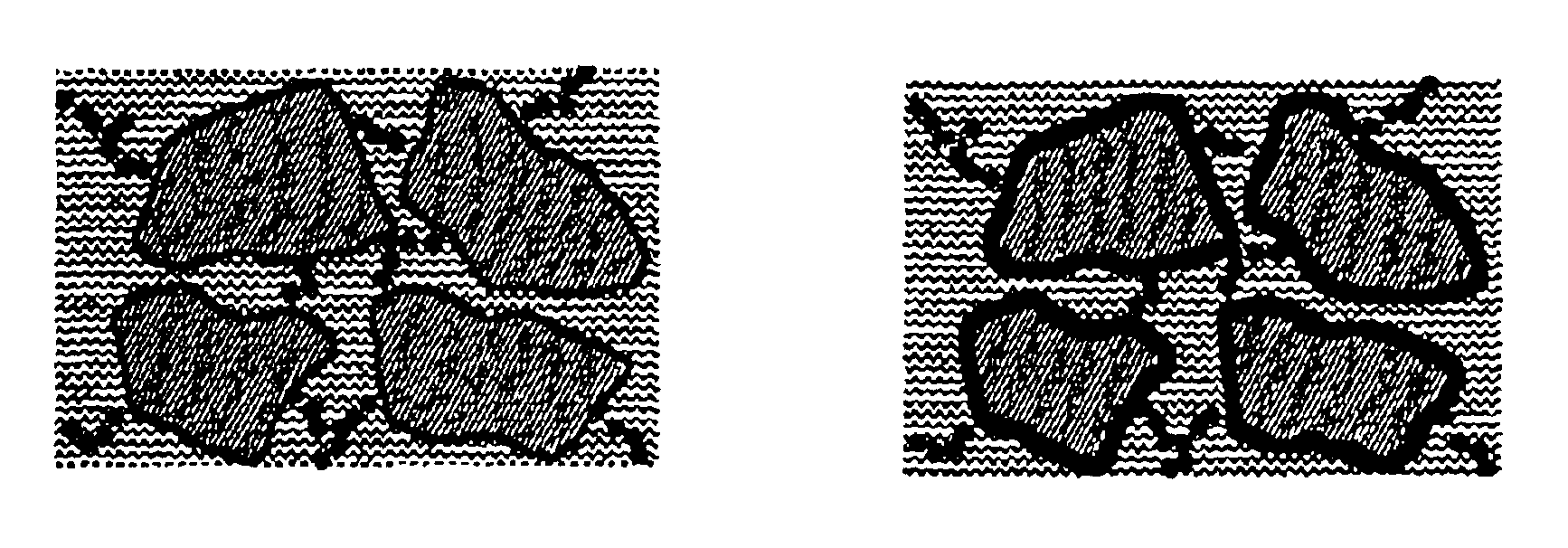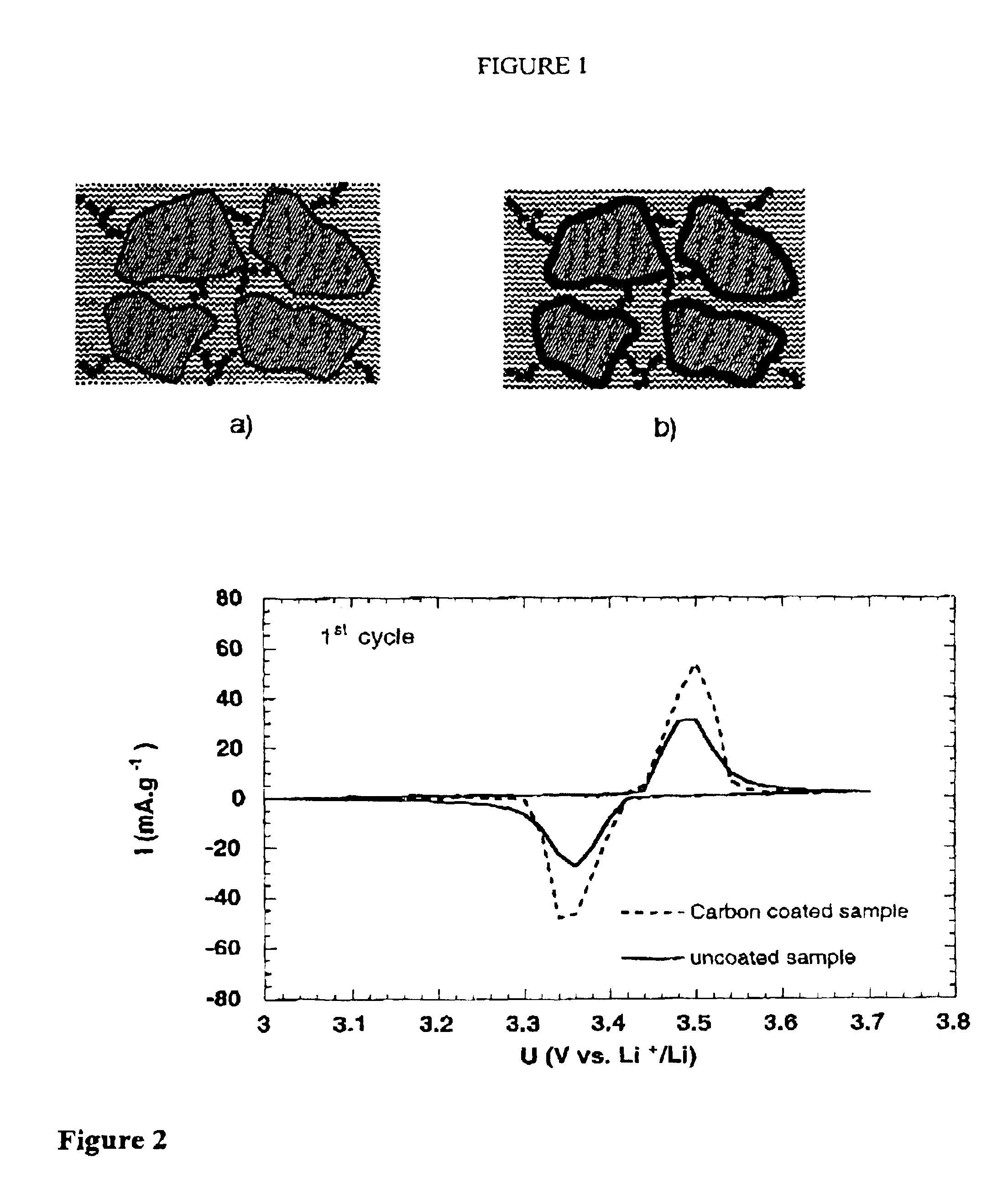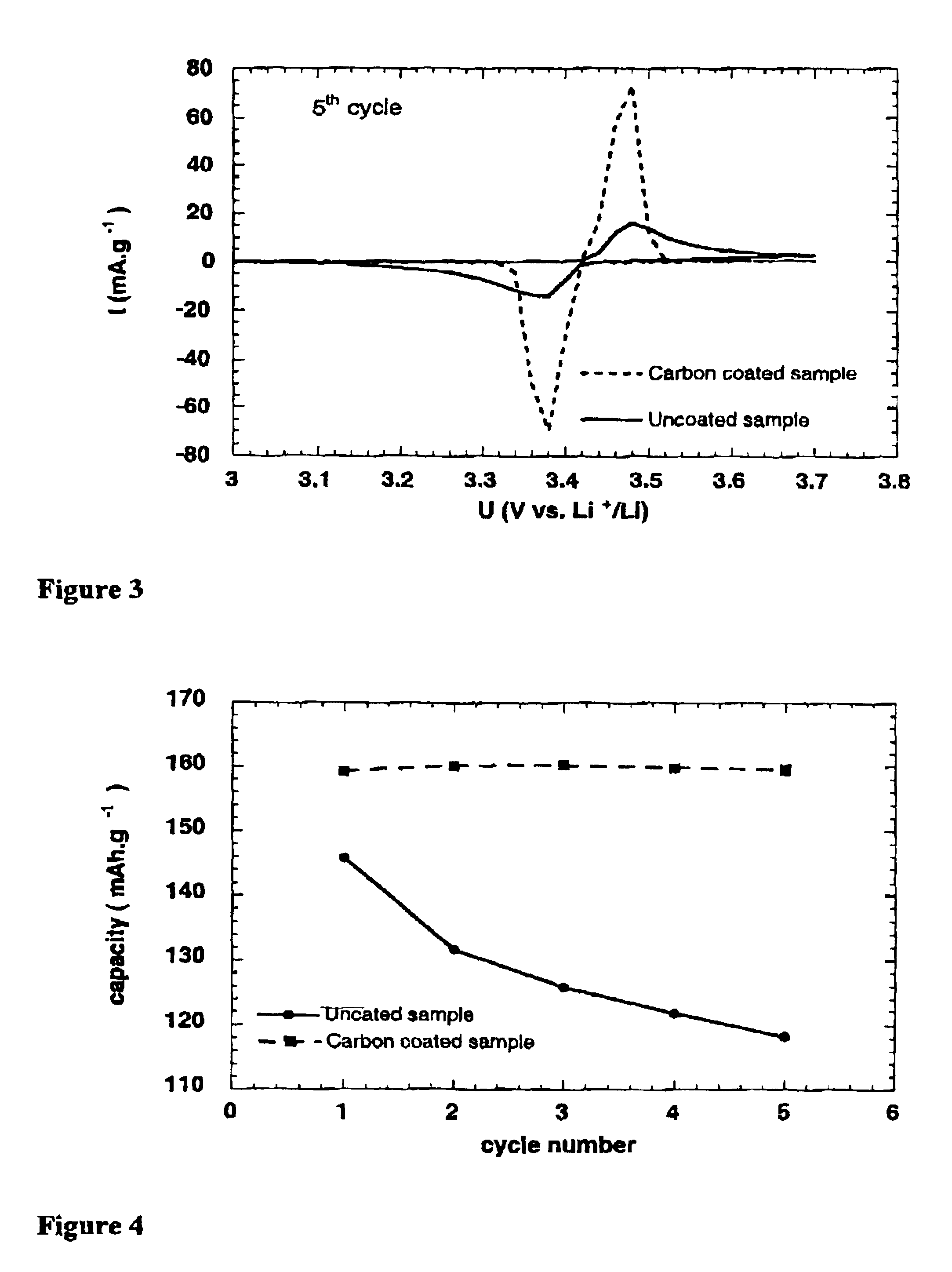Electrode materials with high surface conductivity
a technology of surface conductivity and electrodes, applied in the field of electrode materials, can solve the problems of poor electrical potential distribution within the electroactive material, excessive porosity and loss of operating efficiency of the composite electrode, and redox reactions resulting in the formation of several phases that are usually not reversible, or only partially
- Summary
- Abstract
- Description
- Claims
- Application Information
AI Technical Summary
Benefits of technology
Problems solved by technology
Method used
Image
Examples
example 1
This example illustrates the synthesis of a material of the present invention leading directly to an insertion material coated with a carbonaceous deposit.
The material LiFePO4 coated with a carbonaceous deposit is prepared from vivianite Fe3(PO4)2. 8H2O and lithium orthophosphate Li3PO4 in stoichiometric amounts according to the reaction:
Fe3(PO4)2. 8H2O+Li3PO4→3LiFePO4
Polypropylene powder in an amount corresponding to 3% by weight of vivianite is added. The three components mixed together intimately and ground in a zirconia ball mill. The mixture is then heated under an inert atmosphere of argon, firstly at 350° C. for 3 hours to dehydrate the vivianite. Subsequently, the temperature is risen gradually up to 700° C. to crystallize the material and carbonize the polypropylene. The temperature is maintained at 700° C. for 7 hours. The structure of the material obtained, as verified by X-rays, corresponds to that published for triphyllite. The amount of carbon present in the sample has...
example 2
This example shows the formation of a conductive carbonaceous deposit from a hydrocarbon gas. The synthesis described in Example 1 for the preparation of lithium iron phosphate is repcated without adding polypropylene powder, and by replacing the thermal treatment inert atmosphere with a mixture of 1% propene in nitrogen. During the thermal treatment, propene decomposes to form a carbon deposit on the material being synthesized. The resulting sample obtained contains 2.5% of carbon, as determined by chemical analysis. Cyclic voltammetry is performed on this sample under the conditions described in Example 1 de carbon, and shows the important activation phenomenon during the first cycles (see FIG. 6). The improvement in redox kinetics is accompanied in this instance by an increase of the capacity reversibly exchanged. As measured during the discharge step, the initial capacity of the LiFePO4 sample prepared represents 77% of the theoretical capacity, taking into account the 2.5% elec...
example 3
The tryphilite sample LiFePO4 prepared above is analyzed. Its mass composition is Fe: 34.6, Li: 4.2%, P: 19.2, which represents a 5% difference with respect to the stoichiometry.
The powder to be treated is impregnated with an aqueous solution of commercial sucrose, and dried. The amount of solution is selected to correspond to 10% of the weight of sucrose with respect to the weight of the material to be treated. Water is completely evaporated under agitation to obtain a homogeneous distribution. The use of sugar represents a preferred embodiment because it melts before being carbonized, thereby provided a good coating of the particles. Its relatively low carbon yield after pyrolysis is compensated by its low cost.
The thermal treatments are performed at 700° C. under argon atmosphere. The temperature is maintained for 3 hours. Elemental analysis shows that this product contains 1.3% by weight of carbon. Such thermal treatment leads to a black powder giving an electronic conductivity ...
PUM
| Property | Measurement | Unit |
|---|---|---|
| temperature | aaaaa | aaaaa |
| electronic conductivity | aaaaa | aaaaa |
| electronic conductivity | aaaaa | aaaaa |
Abstract
Description
Claims
Application Information
 Login to View More
Login to View More - R&D
- Intellectual Property
- Life Sciences
- Materials
- Tech Scout
- Unparalleled Data Quality
- Higher Quality Content
- 60% Fewer Hallucinations
Browse by: Latest US Patents, China's latest patents, Technical Efficacy Thesaurus, Application Domain, Technology Topic, Popular Technical Reports.
© 2025 PatSnap. All rights reserved.Legal|Privacy policy|Modern Slavery Act Transparency Statement|Sitemap|About US| Contact US: help@patsnap.com



